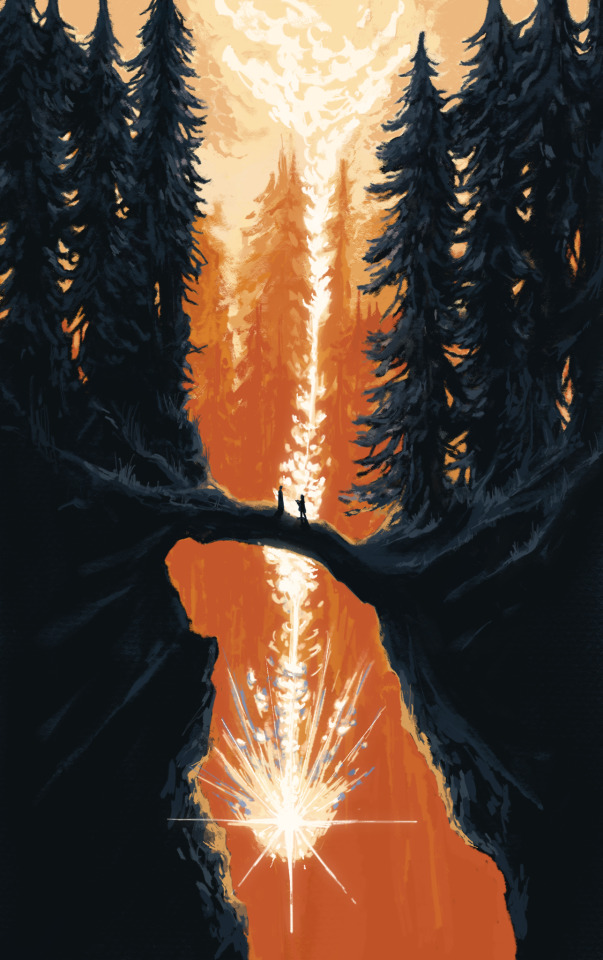Text
Guide: Natural Character Arcs
Anonymous asked: My MC will have a "not my circus, not my monkeys"- behavior, but I want her to slowly want to help peopel as she gets more powerful throughout the series and eventually grows into her role as protector of the people. I want to give her natural character growth without it seeming "out of nowhere" or "out of character" since it will be a total 180 from the start of everything. Do you have any tips for the natural transition in character development that is drastically different from the start?
(Ask edited for length...)
Having a character do a complete but natural 180 between the beginning and end of the story is what's called a "character arc."
Here are the steps in creating a natural character arc:
1 - Understand the Internal Conflict - Stories are either plot-driven (centered on an external conflict/problem in the character's world), character-driven (centered on an internal conflict/problem in the character's self), or a combination of both. Character arc occurs in stories that are character-driven or both plot and character-driven, mainly in the protagonist and other important main characters. It's this problem in the character's self that causes who they are in the beginning of the story, and it's this problem that they must resolve in order to change by the end.
2 - Choose a Relevant Internal Conflict - Your protagonist needs to have an internal conflict that is relevant to the story events. If your story is entirely character-driven, the character arc is the whole story. The events of the story should naturally stem from your character's journey to resolve their internal conflict. If your story is partially plot-driven, the internal conflict should tie into the external conflict in some way. Both conflicts should stem from the same problem, or the path that leads to resolving the external conflict should lead to resolving the internal conflict--either directly or indirectly.
3 - Events = Experiences = Change - As the events of your story unfold, your character should have experiences as a result of those events that impact their understanding of their internal conflict. Let's say your character's internal conflict is the belief that they have no value beyond their role in a villainous organization. As the events of the story unfold, they would need to start seeing evidence that challenges that belief, makes them ask questions, and motivates them to push against the boundaries of that belief. In other words, as this character gets involved with things outside the organization, they start to see evidence that they do have value outside their role in the organization. This avalanches into questioning not just their belief but the organization itself and their involvement of it. As they test the waters of this new understanding and find confirmation that change is right for them, the change naturally takes place.
4 - Include Doubts, Fails, and Setbacks - Although you want the overall trajectory of their arc to be in the direction of their change, you still want to illustrate their doubts (Could this really be true? Do I really have value beyond the organization? Could the organization be bad? No, surely that can't be right...) and have the occasional failure or setback in their attempt to change. In other words, you don't want them to have an easy transition from where they are at the beginning to where they are at the end. Their internal conflict's claws are in pretty deep, so there needs to be some struggle as they try to move in a different direction.
5 - Show the Completed Change in Action - Wherever they end up, you want to give the character the opportunity to show that they've changed. For example, maybe the villainous organization comes at them with an "offer they can't refuse," and the old them would have jumped at that opportunity, but they're not that person anymore. Showing them refusing this offer illustrates that they've really and truly changed once and for all.
Happy writing!
•••••••••••••••••••••••••••••••••
I’ve been writing seriously for over 30 years and love to share what I’ve learned. Have a writing question? My inbox is always open!
Learn more about WQA
Visit my Master List of Top Posts
Go to ko-fi.com/wqa to buy me coffee or see my commissions
279 notes
·
View notes
Text
I don’t think anything quite gets me like ‘grieving character starts wearing something of their dead loved ones,’ particularly if the clothing/jewelry/object/weapon was something that sorta trademarked that other character. It’s like the character is gone but you can still visually see their memory living on through those that loved them. It just hits so hard.
69K notes
·
View notes
Text
Guide: How to Skip Time in Your Story
Few stories take place during a short, unbroken chunk of time. Most stories take place in small chunks spread out over days, weeks, months, or years, which means there will be whole chunks of time not covered. So, how do you skip the time between those chunks?
Scenes and Chapters
With the exception of some very short fiction, most stories are broken into scenes, each of which encapsulates a particular moment or event. In longer fiction, like novellas and novels, related scenes can be grouped together into chapters, though sometimes a chapter contains only one scene. Either way, because scenes and chapters focus on particular moments or events, or a related group of moments or events, starting a new scene or chapter is a natural way to represent the passage of time in your story. In fact, unless otherwise stated, readers will naturally assume that time has passed between scenes and chapters–which doesn’t mean you don’t still have to make the transition between them.
The key to skipping time between scenes or chapters is to make the transition by doing two things:
1) Set up the time skip at the end of the scene or chapter by hinting at what is to come. For example:
As I gazed out the window at January’s first falling snow, I couldn’t help but wonder what the new year would bring.
2) Clarify time, place and (if necessary) POV at the beginning of the new scene or chapter, playing off of the set up from the previous scene or chapter.
The first week of January was over in a blink, and then I found myself back at school, dealing with all the problems I’d left behind during Christmas Break.
Notice how the set up at the end of the previous scene/chapter flows seamlessly into the scene transition at the beginning of the new scene/chapter?
Because the passage of time is expected between scenes and chapters, it’s not always necessary to be direct about how much time has passed. Especially if the amount of time passing is unimportant or already implied.
Direct:
Melinda finally dragged herself out of bed, painfully aware that her entire career hinged on her ability to pull this meeting off without a hitch. She hated the uncertainty of what lay ahead, hating even more the only thing she did know for certain: it was going to be one hell of a shitty day.
# # #
Two hours later, Melinda stood in front of the board, coffee in hand, trying to exude confidence she in no way truly felt. The tired, stoic faces of eleven other men and women gazed back at her, plainly ready for whatever it was she was about to unleash upon them. She only wished she felt as ready as they appeared to be.
Less Direct:
Melinda finally dragged herself out of bed, painfully aware that her entire career hinged on her ability to pull this meeting off without a hitch. She hated the uncertainty of what lay ahead, hating even more the only thing she did know for certain: it was going to be one hell of a shitty day.
# # #
All eleven faces of the other board members gazed back at Melinda, stoic and tired as she stood before them, coffee in hand, trying to exude a confidence she in now way truly felt. It was clear they were prepared for whatever she was about to unleash upon them, and she could only wish she was equally prepared.
In the second example, even though you don’t specifically say “two hours later,” it’s clear right away from the context that the time and place have changed. No one is going to read “all eleven faces of the other board members” and assume that they’re waiting for her in her bathroom as she goes in to brush her teeth the next morning. As often as possible, try to reserve the “two hours later” and “when she got back to the office” transitions for when the context would otherwise be unclear, or when those specific details (how much time has passed, a specific location) is immediately important.
And, if no time is passing between two scenes or two chapters, you can make that clear via context. For example, if one scene ends with Melinda falling asleep and then being woken up by a loud knock at her door, the next scene could continue with something like “Heart pounding from the shock, Melinda jumped out of bed to see who was at her door.” Now it’s clear no time passed in the next scene. But, since a new situation is beginning, it still warrants being its own scene.
Expository Time Skip
Sometimes you need to show a quick glimpse of something that happened but which doesn’t really warrant its own scene or chapter. In this case, you may need to illustrate the time skip using exposition within the scene. It may look something like this:
The first week of January was over in a blink, and then I found myself back at school, dealing with all the problems I’d left behind during Christmas Break. Not the least of which was the newly formed rift between me and Kristina, who was glaring at me from across the hallway as I spun the combination on my locker that first day back. I’d done my best to ignore her, shoveling my million textbooks out of my book bag, doing a quick check of my hair–which somehow managed to be both wet and frizzy with static–before grabbing my biology books and hurrying off under Kristina’s cold glare.
Later that day, at lunch, Michelina and I decided to eat lunch outside, even though it was thirty degrees and still snowing. Despite the wintry chill, it was warmer than the cafeteria with Kristina’s angry gaze constantly searching us out.
Terms such as: later that day, two hours later, the next afternoon, the following day, by the time the bell rang, when it was time to close, etc., allow you to show that time has passed without transitioning to a new scene or chapter. This allows you to cover smaller moments/events that don’t warrant their own space.
Whether you use a scene transition between two scenes or two chapters to show the passing of time, or whether you clarify the time skip through exposition, just pay attention to where you leave your readers before the transition/clarification, and where you take them. Make sure it’s clear, flows well, and wouldn’t leave anyone confused. Do that and you should be in good shape. :)
3K notes
·
View notes
Text
For around six months now I've been living next to an actual real life archive, and it's unnervingly similar to TMA! Here's a few notable things from these past months:
-i watched a balding man in a very posh suit carry a massive antique briefcase out of the building and put it into his car at 4am
-at 12:30am i made direct eye contact with someone working at a computer on a floor I'd never seen anyone go before. (there's a section of car park and pavement between my building and the archive so this was pretty impressive! )
-The smoking area is always full at weirdly specific hours of day and night (presumably breaks), and completely empty the rest of the time. Clearly archiving really does encourage a smoking habit!
-one of the floors has really bright LED lights which were left on day and night for a week, then off for four days, and now are on with every single blind closed.
-for the first few months I only ever saw three people go in or out of the building- a generic looking security guard who yells at people that park in front of the entrance; and a dishevelled looking man, pursued by another man from the smoking area.
-from my window I can see directly into a room that's filled with mannequins! I couldn't tell what they were at first due to the sheer amount, but they range from cpr dummies to full body mannequins.
-despite being able to see many desks I've only consistently seen two people working at them.
-the fire alarm once went off for hours and nobody evacuated.
-recently at 3am I watched a security guard from the building come out to feed bagels to the fox in the car park (not really that relevant but I thought it was quite nice)
-two of the windows have humanlike figures in them at all times, but they're impossible to focus on so I have no idea what they are.
649 notes
·
View notes
Text
BREAKING NEWS: Writer discovers for the millionth time that they can write whatever they want. Join us now to see if the lesson will stick.
61K notes
·
View notes
Text
imo the best way to interpret those “real people don’t do x” writing advice posts is “most people don’t do x, so if a character does x, it should be a distinguishing trait.” human behavior is infinitely varied; for any x, there are real people who do x. we can’t make absolute statements. we can, however, make probabilistic ones.
for example, most people don’t address each other by name in the middle of a casual conversation. if all your characters do that, your dialogue will sound stilted and unnatural. but if just one character does that, then it tells us something about that character.
164K notes
·
View notes
Text
TYPES OF CLOTHES !!
use these for inspo in your character's outfits

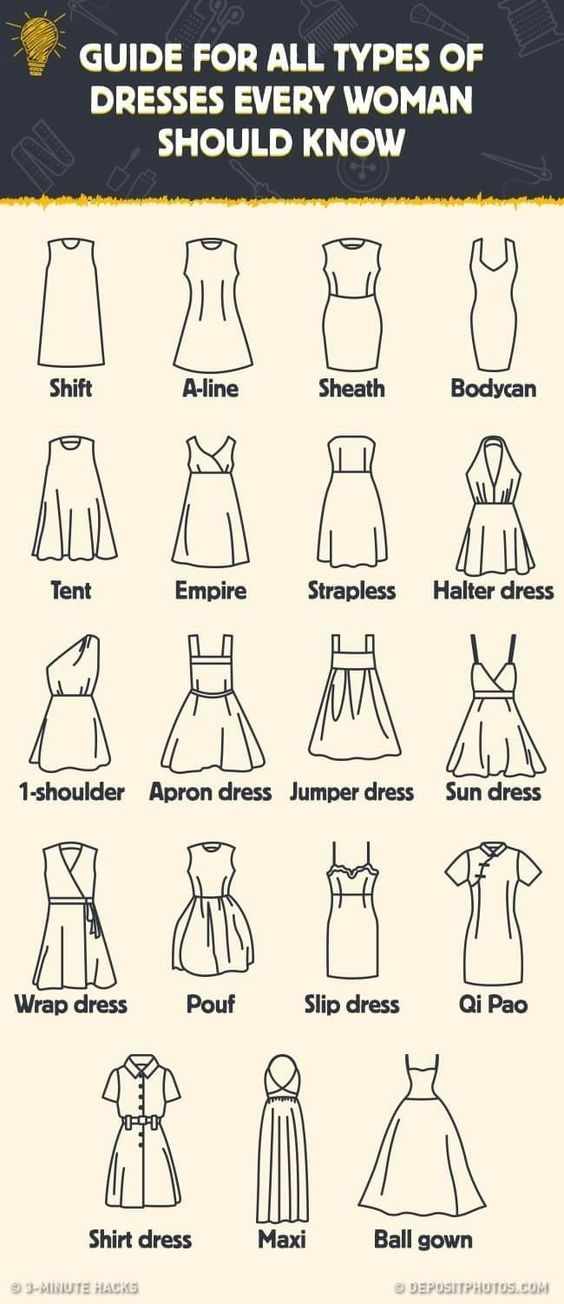

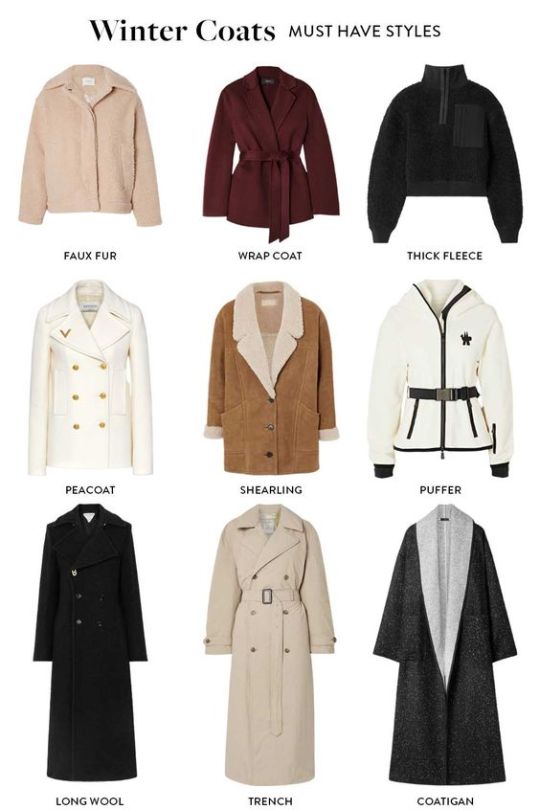


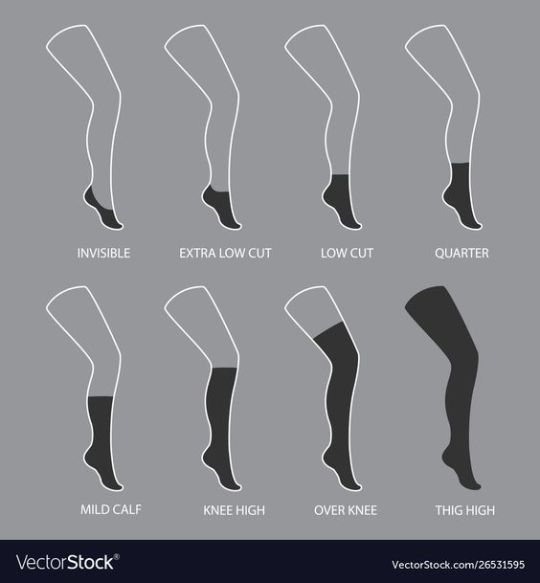

3K notes
·
View notes
Text
I ❤️ self-loathing characters, characters who struggle with monstrosity (either fearing or embracing it), characters who are so lonely, who have a gaping hole in their chest, who bottle up & repress their feelings, who claw their way up & have ambitions, who fall down & lose everything, who search for identity & purpose yet can’t see themselves outside of what others want from or expect of them, who are hurt & hurt others, who long & grieve, who lie & pretend. characters who are messy & flawed & human
40K notes
·
View notes
Text
when u come up with a tiny change for your story that not only makes the writing flow better but also hammers in the character motivations and story theme

69K notes
·
View notes
Text
love the trope of being created for some nasty high purpose - You Were Meant To Destroy Them All™ - and the character instead finds empathy and hope. good shit right there.
35K notes
·
View notes
Text
A Common Problem With Fantasy Castles: The Details
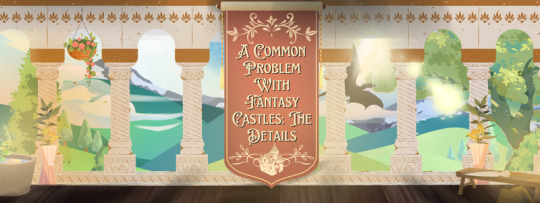
Commonly, in both books and movies, the castles are shown or described as having bare, cold, stone walls and floors. They look dark, depressing, and sometimes not even all that impressive even though someone important is living there. What people are forgetting is that when you invite people into your castle, how it looks can be a representation of how powerful you are. As well as that, if you are going to live there, you will want to make it comfortable.
Yes some castles did have bare stone, but I just want to clarify that it is not your only option. Here are some ideas on how make your fantasy castles seem more interesting:
Flooring
Wood Stains. You can stain wood a variety of colors
Tiles. Hand-painted medieval tiles can be absolutely stunning (though expensive) and some have lasted even to today.
Rugs and Carpets. Not only do they help with warmth, but they can also send a message. If someone enters a castle and there is a rug on the floor that would have cost a fortune to make, that tells the visitor that this person has so much money, it is fine to walk on the rug.

Walls
Whitewashing. Whitewashing castle walls(sometimes after smoothing them with plaster) was extremely common, which alone brings a lot of brightness to the room.
Fabric. Tapestry was a quick and less expensive way to add extra insulation to a room, and also added color. Imagine elaborate hand-stitched artworks.
Wainscoting. This is simply just wood added to the wall for decoration, but it can be expensive.
Stonework. The stone of the castle itself could be made beautiful. For an example of amazing carved stonework, look up Rosslyn Chapel.
Paintwork. Yes, medieval times did have colorful paints. Many of the mural decorations were incredibly detailed, but even simple flowers were popular to paint on walls.

Other Décor
Even medieval people hung up items just for the sake of decoration. Commonly in movies, the most interesting thing you see on the walls is a coat-of-arms, or maybe a boars head, but you do have more options.
Suits of Armor. Many suits of armour for royals would never see battle, but they could be shown off. This was a way of showing your power. In fact, children, dogs, cats, and even elephants, have all had armour made for them, even though some of these would never see battle, or quickly grow out of the fit.
Imported Items. Imports were expensive, and having decorations from another culture made you look educated and rich.
Furniture. Could be metal, wood, or stone. It could be amazingly detailed.
Statues. Keep in mind that many of statues used to be painted, so they don’t have to all be void of color. They also do not all have to be about a families history; sometimes people are passionate about a certain subject. For example, a king might have an obsession with an ancient culture and collect statues about that cultures myths.
Weapons. I have been into a few castles where the collections of weapons cover the walls of the entire rooms.
Pottery. Ancient or simply just the most famous artist of the times.
Lighting. Candles, especially beeswax, were not cheap. Having enough candles to brighten an entire room is for sure a show of wealth.
436 notes
·
View notes
Text
Places you should add to your little town/city in your fantasy world!!
Post offices. Wild, I know. But give me the unhinged kind. Pingeons and little postal dragons all over the place. You enter. The most disgusting smell fucking assaults your nostrils. You know what it is. Letter in hand, you go up to the counter. The postal worker is just a slightly bigger pigeon. You shed a tear.
PLAYGROUNDS!! Create the most dangerous kinds of playgrounds, the ones suburban moms would TRIP if they ever saw one. Monkey bars that are way too tall, swings that go full circle... The metal slide stays the same, it's already painful enough.
PARKS!! MAKE IT ALIVE!! Show people going on walks, reading beneath trees. C'mon most of them are already hundred years old (And are going to die after that CR 15 creature wrecks the town) anyways!! Show couples and picnics, show a family enjoying the sunday, give me someone picking flowers for their loved ones.
A bakery! Do you know how much these places are underrated? And do you know how much plot potential they have? Every good story starts with food poisoning or granny's recipe! Give me a place your players/readers are going to treat like home and, for once, it's not a tavern or a guild.
Government buildings! Give me a town hall that has a kilometric line in front of it. Give me a registry that is as old as this town. Give me police stations! Give me courtrooms! Make one of your players get arrested and now all of the party has to go through burocracy like a bunch of normal people!
(Who am I kidding? You don't need to make them get arrested. They are going to do that for you.)
Touristic attractions! Give me a full-on statue of the country's leader! Give me museums! Give me streets, ruins and whatnot that attract thousands of tourists everyday! Give me an annoying city guide that tries to get the party's attention everytime!
Magazine stands! Magazines don't exist? Newspaper stands! From the Queen's Journal to the most questionable new piece of Fox's Tailtracker, you have it all! Make your players doubt what's actually happening, sprinkle a little fake news... Or is it fake at all?
...Toy stores. OK HEAR ME OUT. Make magic toys; miniature skyships that actually fly, metal toy dragons that expel fire, little wands that make little light spells, wooden creatures that can move and make noises... Make children happy! And your players too because they will waste their money on these stuff.
Instrument store!! Make your bards happy with special instruments or just weird ones! Give me a battle in one of those that is just filled with funny noises and the worst battle soundtrack ever!!
Not exactly a place but... Cleaning carts!!! Show me people cleaning the streets, picking up the trash, cutting trees!! Make the town look clean!! Give me an old man that is really proud of his work!!!
(or ways to make your players feel even worse when the villain destroys the town later on :) )
19K notes
·
View notes
Text
Small details on a character (appearance wise)
- Do they wear their clothing or accessories the "Correct" way? (as they're intended to be worn) Do they have difficulty dressing themself? Where have they gotten their accessories and clothes? Could they get new ones, and how? Do the clothes or accessories fit them? Literally or physically? (Contradicts their personality and fashion sense / clothes too big or too small, not scaled for their body?)
- Can you tell their age by appearance? Have they aged as they should've, or are there reasons why they'd look older or younger? Do they look to be in good health or are they just young? Could you tell if their looks are based on their age vs their health? Why or why not? What's their personal hygiene routine? What affects it?
- Eye shapes? Nose shapes? Jawline? Cheekbones? Forehead size and shape? Teeth? Lips? Hands? Facial hair? Arm hair? Body hair? Baby hairs?
- Freckles? Moles? Birth marks? Tooth gaps? Eyebags? Eye wrinkles? Different lash types? Styled or free growing eyebrows? Cheek dents? Dimples? Mouth creases? Chin shape?
- Do they have signs of wear and tear? Why or why not? Do they hide it? How's their posture? Walking style? How do they hold themself? Do they idle? Fidget? Do they easily tire being in one position? How much do they prioritize comfort when out and about?
- How would they handle a broken nail? Ripped hair? Broken or fallen tooth? Broken nose? Punctured lip? Messed up makeup? Being forced to wear makeup? Being forced not to?
285 notes
·
View notes

